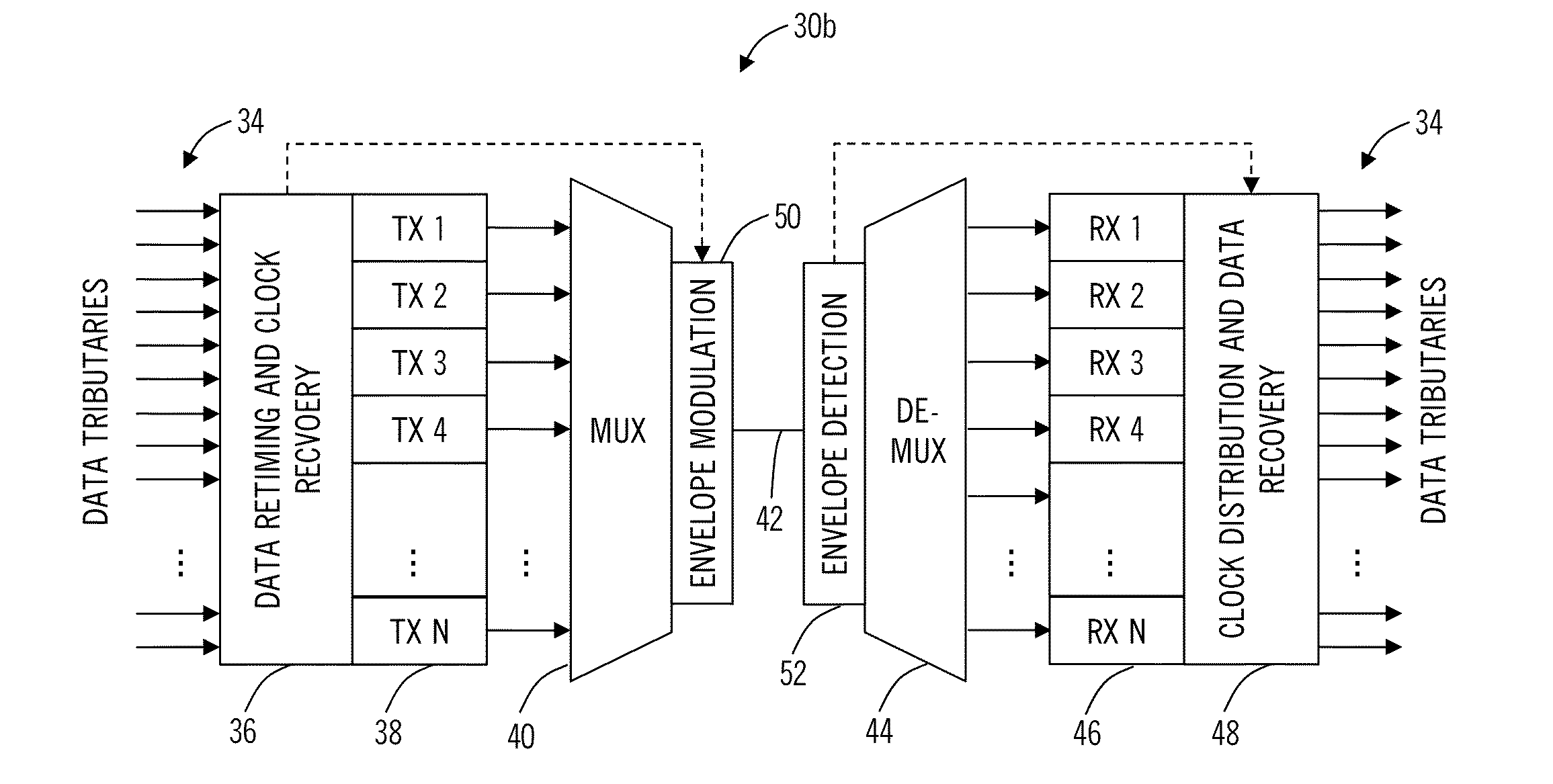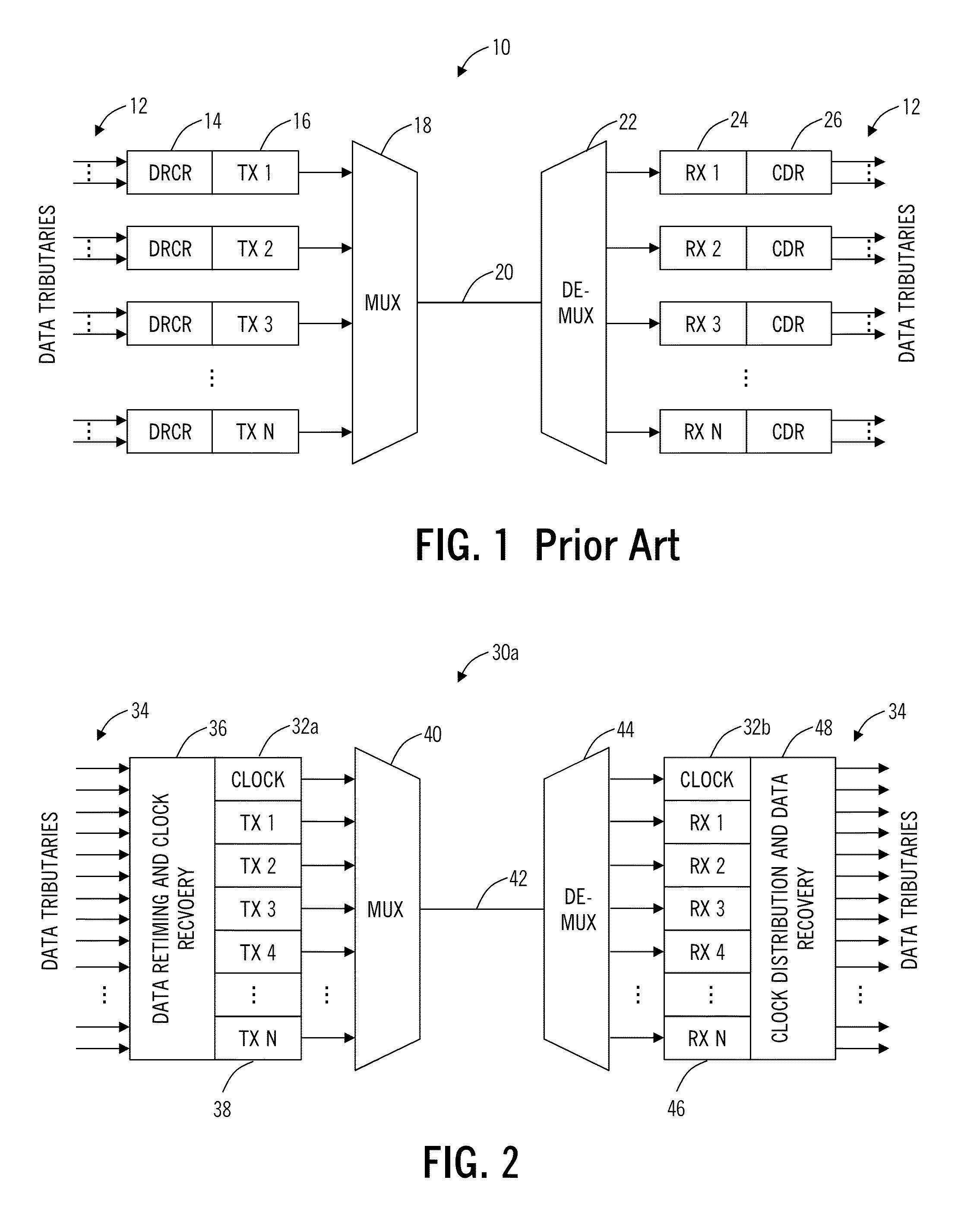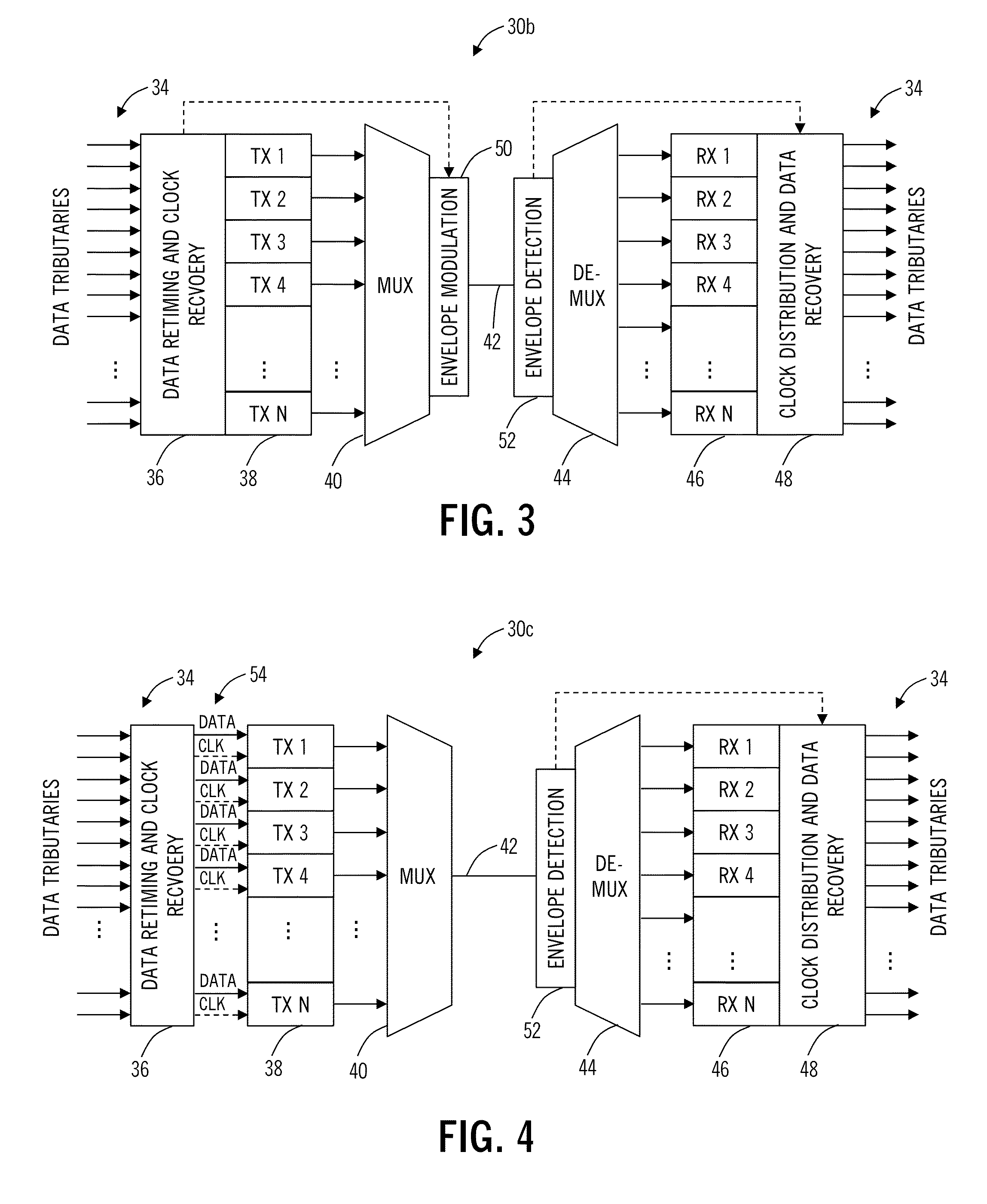Optical transceiver and method with channel binding, clock forwarding, and integrate-and-dump receivers
a transceiver and channel technology, applied in the field of optical networking systems and methods, can solve the problems of power and real estate waste, severe complicating process of further receiver bandwidth expansion, and inability to be easily satisfied, so as to simplify the clocking architecture and boost the sensitivity of the receiver
- Summary
- Abstract
- Description
- Claims
- Application Information
AI Technical Summary
Benefits of technology
Problems solved by technology
Method used
Image
Examples
Embodiment Construction
[0018]In various exemplary embodiments, an optical transceiver and method is disclosed to optimize system design of WDM highly parallelized transceivers by using optical bound channels, a simplified clocking architecture, and boosted receiver sensitivity. With application of photonic integration technology, highly parallelized transmitter and receiver arrays can be mass produced at low cost, making high-capacity point-point optical links much more feasible. Hence, simplified, efficient and cost effective WDM optical bound-channels disclosed herein can find wide usage in short reach chip-chip, board-board, data center, and metro-type applications. Optically bound channels include a signal X that is includes Y1, Y2, . . . , YN parts or segments that are each transmitted on a set of optical WDM carriers within the same optical module to create a composite line side signal where Y1+Y2+ . . . +YN=X. For example, optically bound channels can include 10×10 G, 4×25 G, etc. for a 100 G compo...
PUM
 Login to View More
Login to View More Abstract
Description
Claims
Application Information
 Login to View More
Login to View More - R&D
- Intellectual Property
- Life Sciences
- Materials
- Tech Scout
- Unparalleled Data Quality
- Higher Quality Content
- 60% Fewer Hallucinations
Browse by: Latest US Patents, China's latest patents, Technical Efficacy Thesaurus, Application Domain, Technology Topic, Popular Technical Reports.
© 2025 PatSnap. All rights reserved.Legal|Privacy policy|Modern Slavery Act Transparency Statement|Sitemap|About US| Contact US: help@patsnap.com



